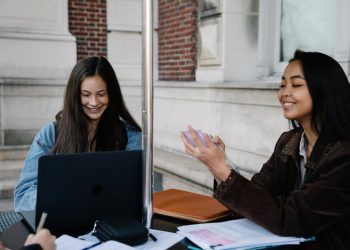Social media often gets a bad rap for its negative impacts on young people studying – and it’s easy to see why.
Firstly, it’s highly addictive: almost one in two Gen Zs feel they’re addicted to social media, according to our What Gen Zs Really Do Online report.
Secondly, it’s super distracting.
In fact, a recent study conducted by Tallo found 82% of Gen Zers said that social media was a distraction to them while doing schoolwork.
And 40% of young people told us they think phones should be kept in lockers during class to keep the distraction of social media at bay.
But what if we’re looking at this the wrong way?
Bear with us here.
Almost nine in 10 Gen Zs use social media apps like Instagram regularly, so it’s a safe assumption to make that social media is here to stay.
So what if instead of hyperfocusing on mitigating the negative impacts of social media, we realised and capitalised on its potential as a valuable educational (and personal development) tool?
Take this 15-year-old female from NSW’s experience with using social media as a learning tool.
“Social media has influenced most of my decisions as well as the way I go about solving my problems,” she told us.
“I have used social media as a great study tool and it has helped me with research that I have had to do at school for an assignment or homework, and it has given me access to talk to different people and allowed me to gain a better understanding of certain concepts relating to my field of study.”
The sentiment is getting support from universities.
A blog article published by the University of Arizona explored how social media could positively influence the way young people learn today.
“The collaborative environment and open forum that social media encourages, along with the rapid-pace of information sharing that it facilitates, means that students can accelerate the development of their creative, critical thinking, and communication processes in certain ways when they use it,” the article explained.
“Social media promotes self-directed learning, which prepares students to search for answers and make decisions independently. When reinforced in a classroom setting, these social media skills can be guided and refined to produce better learning outcomes and critical awareness.”
But how?
The university suggested incorporating social media platforms such as Twitter, YouTube, LinkedIn, and Skype into the traditional learning environment to encourage Gen Zs to engage more and expand their creative freedom.
“Of course, as the social media landscape changes, classrooms will also need to adapt – but with social media already impacting the way we learn and interact outside of the classroom, applications within the classroom will likely only increase.”






